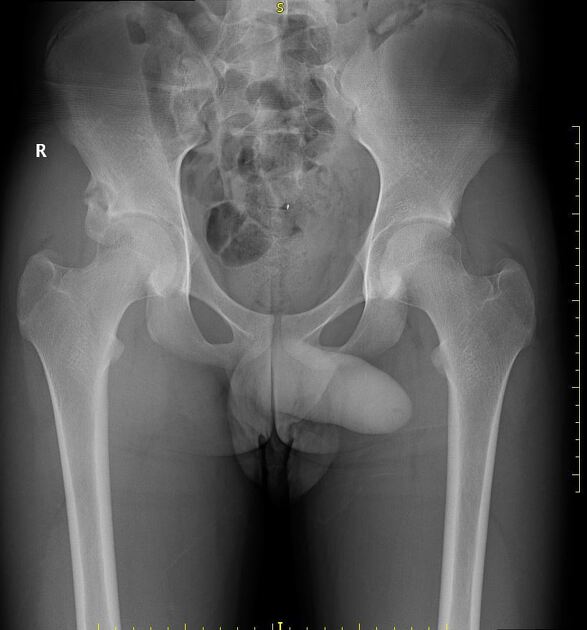Presentation
Injured his right hip during a football match a few months back. Ongoing pain and limited range of motion.
Patient Data



Features consistent with a healing anterior inferior iliac spine avulsion injury.
There is evidence of age-appropriate skeletal immaturity.
Case Discussion
Anterior inferior iliac spine apophyseal avulsion injuries are less common than anterior superior iliac spine apophyseal avulsion injuries. The straight head of the rectus femoris muscle attaches here. It is more common in males.
Forceful extension of the hip (with knee flexion) results in this type of avulsion injury. Sports involving kicking have the highest risk. Treatment entails initial bed rest, hip and knee flexion, and progressive mobilization over a period of 5-6 weeks. Together with anterior superior iliac spine avulsions, they are generally less symptomatic than avulsions of the ischial tuberosity and usually heal in half the time too (6-12 weeks for ischial tuberosity avulsions).




 Unable to process the form. Check for errors and try again.
Unable to process the form. Check for errors and try again.